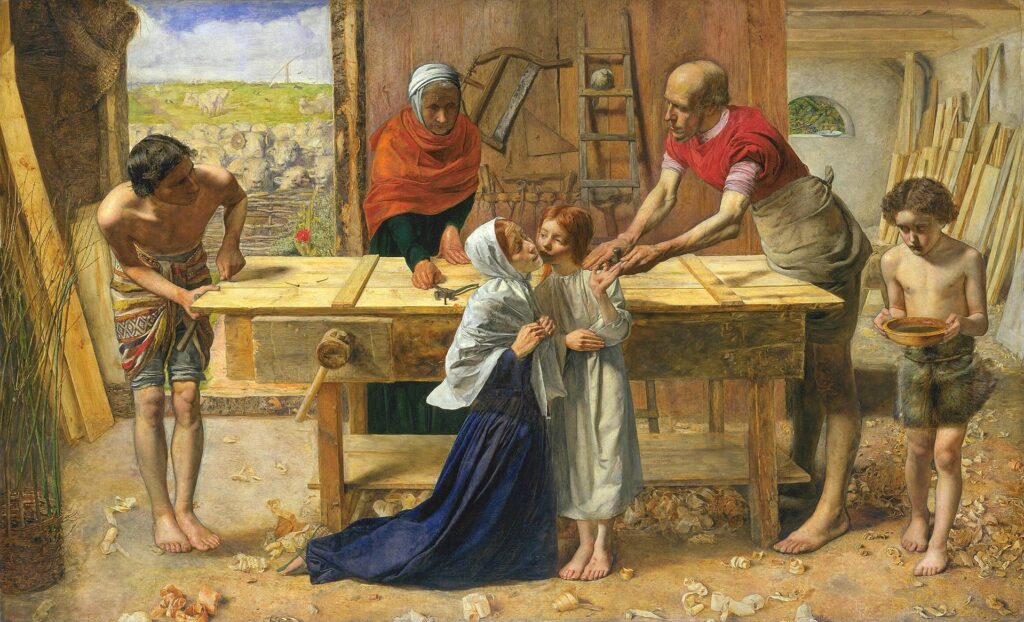
Sir John Everett Millais’s Christ in the House of His Parents, also referred to as The Carpenter’s Shop, was painted between 1849 and 1850. The oil on canvas measures 86.4 cm × 139.7 cm and is housed in the Tate Britain in London, England. The museum purchased the work in 1921. It is framed in an ornamental gold gilded frame with a pediment.
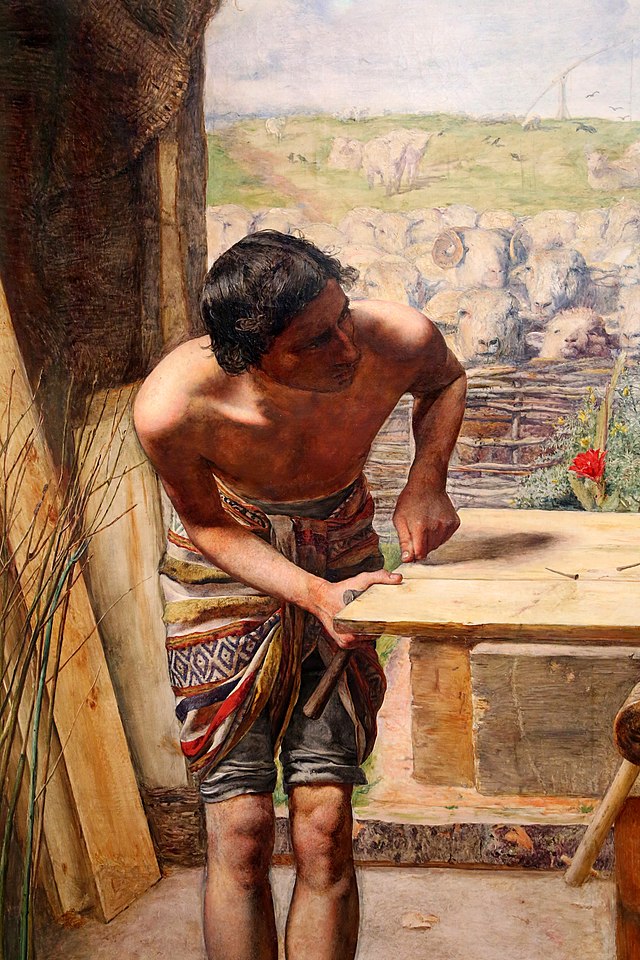
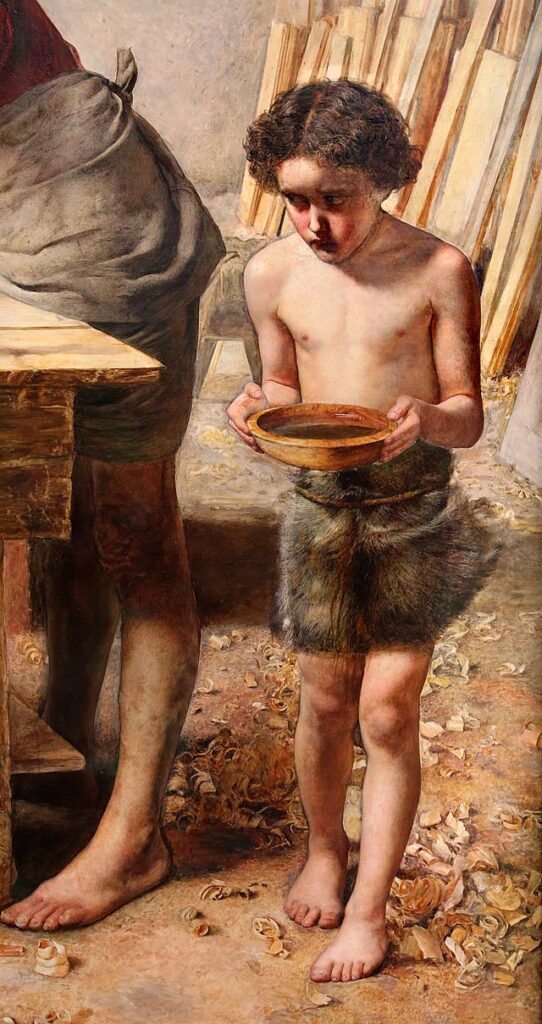
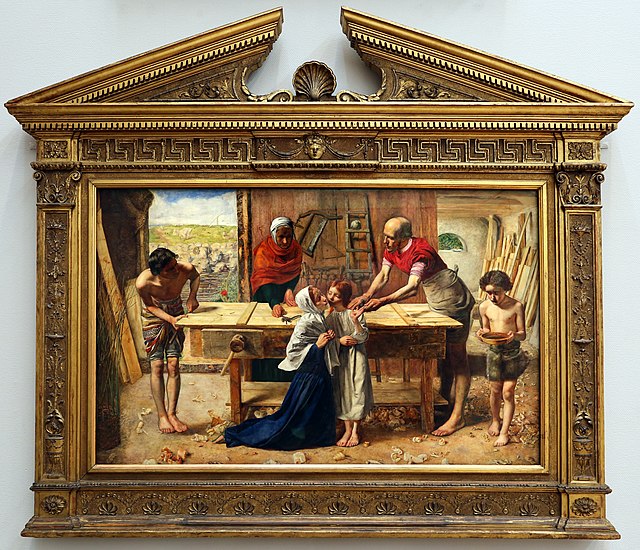
John Everett Millais Biography
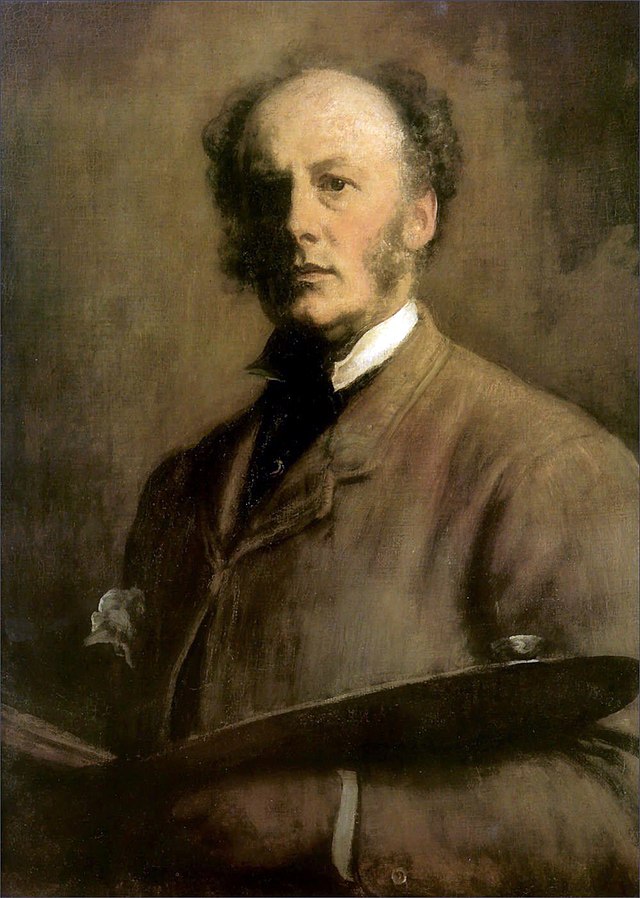
John Everett Millais lived from 1829-1896. Millais was born in Southampton, Hampshire in England and died in London, England. Millais was one of the three founders of the Pre-Raphaelites and is most famous for his paintings, Ophelia and Christ in the House of his Parents. Millais was enrolled in art classes at the Royal Academy at only 11 years old. There he met Dante Gabriel Rossetti (1828-1882) and William Holman Hunt (1827-1910) and helped found the Pre-Raphaelite Brotherhood in 1848. The Pre-Raphaelites sought to emulate medieval and Renaissance art prior to Rapheal (1483-1520), Therefore, they did not idealize their compositions but focused on imitating nature with a religious fervor.
Millais amassed favorable and harsh criticism for his works. Writer Charles Dickens (1812-1870) was famously against Millais’s paintings, while John Ruskin (1819-1900) was initially a huge supporter. However, Millais married Euphemia (Effie) Gray (1828-1897) after her marriage to Ruskin was annulled. The marriage created somewhat of a scandal because Gray and Millais fell in love during a trip Millais took with the couple to Scotland to paint Ruskin’s portrait. Millais and Gray had eight children.
What is Depicted in the Artwork?
The scene depicted is the Holy Family in Joseph’s Workshop. Mary’s husband Joseph was a carpenter. The scene features Jesus as a boy. He has cut himself on a nail while helping his father build a door. Also present are Mary and Joseph, his mother and father, both tending to his wound and his cousin John the Baptist who brings water. Jesus’s grandmother Saint Anne works on the door next to another man who aids in the production. In the back right we see planks of wood stored upright along the wall. In the back left of the scene is a field and a flock of sheep in a pasture. Behind Anne are carpentry tools and a ladder on the back wall.
Throughout Art History, artists have portrayed this scene. However, Millais’s painting, in keeping with the newly designated principles of Pre-Raphaelitism, depicts a far more realistic setting. In fact, Millais painted the scene from a carpentry workshop on Oxford Street in London. Additionally, Millais chose to utilize friends and family members instead of professional models for Jesus’s family. Millais’s father’s head was used for Joseph, his sister-in-law for Mary and his young cousin and a friend’s son for John the Baptist and Christ.
Artwork Analysis
A red-haired boy, about 10 years old, and a kneeling woman in blue are the focal point of the image. The boy is young Jesus, who has just injured himself. The young boy leans in to kiss his mother’s cheek. His mother, the Virgin Mary, furrows her brow and clasps her hands tightly with a mixture of worry and the projection of her future pain. The painting depicts Mary as a concerned mother and humble wife of Joseph, not as the ennobled Madonna of High Rennaissance art. Mary wears a blue dress, and her head is covered by a white cloth. Millais’s painted the characters costumes reminiscent of dress like roman togas rather than 19th century dress.
The family is situated in a carpentry workshop. In the right foreground, John the Baptist, Jesus’s cousin, brings a bowl of water to aid his parents in taking care of young Christ. A look of slight jealously towards Jesus, flashes across John’s face. The bowl of water signifying the later baptism that would take place between John the Baptist and Jesus. Christ’s grandmother, Saint Anne, reaches over the carpentry worktable toward the pinchers on the door they are constructing. In dramatic contrast to the stress emulating from his other family members, Christ’s own stance is serene, and he calmly offers his hand to his father for aid.
Millais’s intense mimetic detail suggests the viewer is seeing into Joseph’s studio as it would have existed in biblical times. However, the perspective utilized replicates a 15th century effect. Additionally, Millais was inspired by many Quattrocento works of art. Likely, the German artist Albrecht Durer’s (1427-1528) Melancholia I served as an early inspiration for this work.
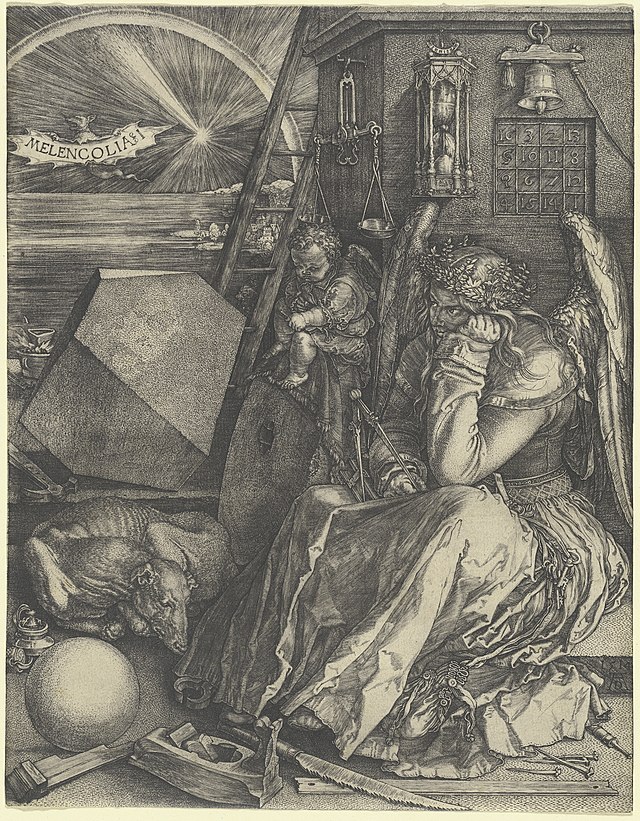
Also, Millais, like other Pre-Raphaelite artists, emulated Renaissance tempura painting by utilizing white priming. This led to vibrant colors and pencil marks which can be detected within the layers of paint.
As Millias’s first major religious work, the artist filled the painting with religious symbols to explain the Christian narrative. For instance, the ladder in the background represents Jacob’s ladder and the sheep in the background symbolize the future Christian flock. The unfinished woven basket in the left corner suggests that Christ’s destiny to die on the cross has not yet been fulfilled but is already being woven into the fabric of history. The exposed nail, which caused Christ’s injury foreshadows his death and crucifixion. To the left, a worker in Joseph’s workshop looks on at the event, foreshadowing the disciples Christ will haveThe white dove against the back wall represents the Holy Spirit. The theological significance of the triangle is the eventual creation of the Holy Trinity or God the father, son and Holy Spirit. Though no title was initially given to the work, it was accompanied by a verse from Zachariah detailing the image.
Why was Christ in the House of his Parents controversial?
When Christ in the House of His Parents was first exhibited at the Royal Academy, it was extremely controversial with the Victorian public and art critics. In fact, the work received so many negative reviews that it was removed from the exhibition. Out of sheer curiosity, Queen Victoria asked that the work be brought to Buckingham Palace, so that she could see it in person. What the negative reviews from critics and the public mentioned was the realistic depiction of a carpentry workshop as the backdrop for the religious scene featuring the Holy family. The art world was used to idealistic depictions of Jesus, Joseph and Mary. They disliked that Millais had chosen to depict Christ in this manner. Famed art critic and writer, Charles Dickens accused Millais of sullying Christ and Mary. Dickens’s did not like, the way Millais was portraying Mary and disliked especially the dirt on the floor of the Carpenter’s shop. Dickens also disliked the portrayal of the Christ’s family, describing Christ as, “a hideous, wry-necked, blubbering red headed boy, in a bed gown,” and Mary as “so horrible in her ugliness,” that she could only exist in the “lowest gin-shop in England.” Additionally, critics suggested that Millais’s was making commentary on the bigotry in the Catholic Church.
Where is Christ in the House of His Parents?
Christ in the House of his Parents by John Everett Millais is in the Tate Britain.
What is John Everett Millais known for?
John Everett Millais is known as a 19th century painter who was a founding member of the Pre-Raphaelite Brotherhood. In addition to being only 11 years old when he began attending the Royal Academy, Millais was elected a full academician by 1853. Millais would go on to produce works like Ophelia and Christ in the House of His Parents. These works are hugely famous Pre-Raphaelite works.
Other Artwork by the Artist
Other works by Sir John Everett Millais are:
- Sir John Evertt Millais, Isabella, 1849
- Sir John Everett Millais, Christ in the House with His Parents, 1850
- Sir John Everett Millais, The Order of Release, 1853
- Sir John Everett Millais, A Huguenot, 1852
- Sir John Evertt Millais, John Ruskin, 1854
- Sir John Everett Millais, The Blind Girl, 1856
- Sir John Everett Millais, Bubbles, 1886
Other Artwork of the Depiction
Most commonly, 19th century scenes of the Christ’s family in Joseph workshop feature an idealization that is absent from Millais’s Christ in the House of His Parents. An example is the Holy Family in Joseph’s Workshop by Belgian Artist Edward Dujardin (1817-1879).
Another Artist tackling the subject was John Rogers Herbert (1810-1819) whose 1847 image of Jesus assisting in the house of his parents fit more readily within the conventions of Biblical genre scenes.
Millais’s colleague William Holman Hunt was also painting scenes from early Christian history. Two examples are, A Converted British Family Sheltering a Christian Missionary from the Persecution of the Druids (1849-1850) and The Shadow of Death (1870-1873). Rather than a youthful saviour, Hunt’s version of Christ in The Shadow of Death is older. However, Hunt’s work contains much of the same symbolic realism.
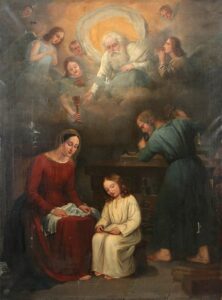
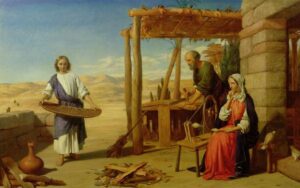
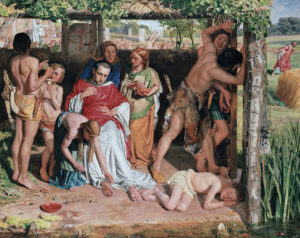
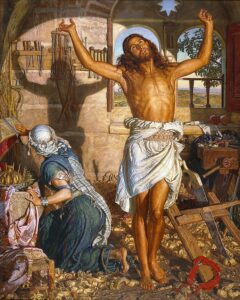
Citations:
Bullen, J. B.., Bullen, Professor of English J B. The pre-Raphaelite body: fear and desire in painting, poetry, and criticism. United Kingdom: Clarendon Press, 1998.
Russell, Peter and John Everett Millais. Delphi Complete Works of John Everett Millais (Illustrated). United Kingdom: Delphi Classics, 2020.
